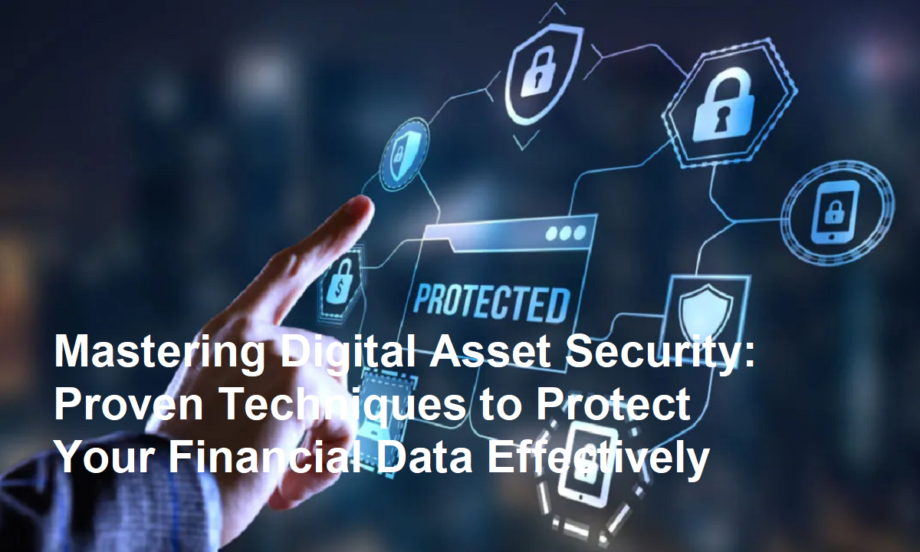Introduction
In the rapidly evolving world of finance, digital assets have become a vital component of personal and business wealth. However, the convenience of managing financial assets online comes with significant risks — cyber threats, hacking attempts, and unauthorized access. Protecting digital financial data requires effective techniques grounded in solid cybersecurity principles. This article will explain key strategies to safeguard your digital financial assets while adhering to best SEO practices and EEAT standards.
The Rising Importance of Digital Financial Asset Protection
Digital financial assets encompass cryptocurrencies, online banking accounts, mobile payment systems, and other electronically stored monetary instruments. As the adoption of these assets grows, so does the threat landscape. Fraudsters and cybercriminals employ advanced tactics to compromise accounts, steal information, and drain funds.
Understanding the importance of protection is the first step toward securing digital wealth. Without proper defenses, users may face severe financial losses and identity theft, impacting their credit scores and overall security.
Key Techniques to Protect Digital Financial Assets
Here are some of the most effective techniques for defending your digital financial data:
-
Use Strong and Unique Passwords
Passwords remain the first line of defense. Creating strong, complex passwords that combine uppercase and lowercase letters, numbers, and special characters helps to withstand brute-force attacks. Avoid using the same password across multiple accounts, as vulnerability in one platform can cascade to others.
-
Enable Two-Factor Authentication (2FA)
Two-factor authentication adds an extra layer of security by requiring two forms of verification before granting access. Common 2FA methods include SMS codes, authenticator apps, or biometric verification. Enabling 2FA significantly reduces the risk of unauthorized access, even if a password is compromised.
-
Keep Software and Devices Updated
Cybercriminals exploit vulnerabilities in outdated software to gain entry. Regularly updating your operating systems, banking apps, antivirus programs, and firewalls ensures you have the latest security patches that close potential loopholes.
-
Utilize Secure Networks and VPNs
Accessing financial accounts over unsecured public Wi-Fi can expose sensitive data to hackers. Use private, secure networks whenever possible and consider employing Virtual Private Networks (VPNs) to encrypt your internet traffic and mask your IP address.
-
Beware of Phishing and Social Engineering Attacks
Fraudsters often use phishing emails, fake websites, and scam calls to trick users into revealing credentials. Always verify the legitimacy of communication claiming to be from financial institutions and never click on suspicious links or attachments.
-
Back Up Your Digital Data
Regularly back up important financial data and wallet information in secure, offline locations. This practice ensures recovery options in case of hardware failures, ransomware attacks, or accidental deletions.
Advantages and Challenges of These Techniques
Advantages:
- Enhanced security and reduced risk of data breaches
- Increased user confidence in digital financial platforms
- Protection against common cyberattacks and fraud
Challenges:
- Some security measures may seem cumbersome or time-consuming
- Users must remain continuously vigilant and educate themselves on emerging threats
- Technical difficulties can occur when integrating multiple security layers
The Role of Education and Vigilance
The effectiveness of any security technique depends not only on technology but also on user awareness and behavior. Being educated about the latest trends in digital finance security and practicing cautious habits can prevent most cyberattacks.
Continuous learning, combined with the deployment of technology-based protections, creates a robust defense framework.
Final Thoughts: Securing Your Digital Financial Future
Protecting digital financial assets is no longer optional but a necessity in the modern digital economy. Employing strong passwords, two-factor authentication, secure networks, and staying aware of phishing threats are crucial first steps.
By adopting these proven techniques, you can safeguard your digital wealth, maintain privacy, and enjoy the advantages of modern financial technology with peace of mind.









